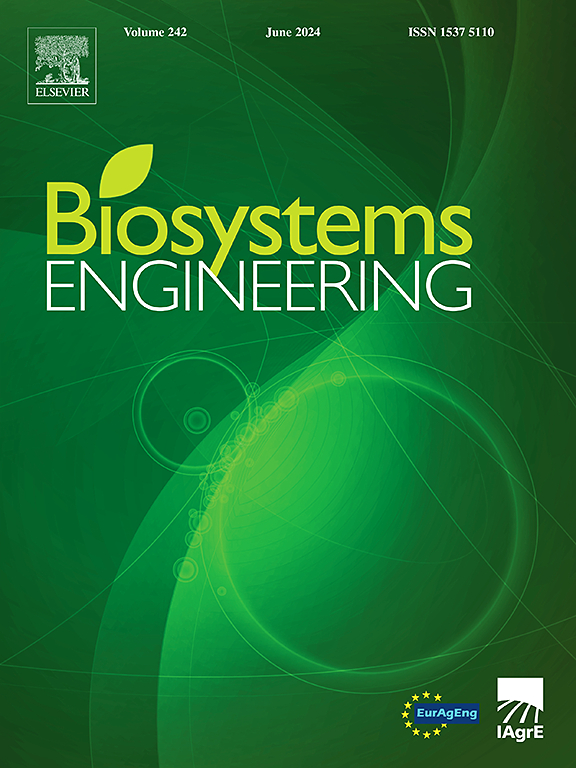In situ volume measurement of dairy cattle via neural radiance fields-based 3D reconstruction
IF 4.4
1区 农林科学
Q1 AGRICULTURAL ENGINEERING
引用次数: 0
Abstract
Accurate body measurements in dairy farming are labour-intensive and stressful for animals. A more efficient, animal-friendly method for in situ measuring is strongly needed. This study proposes a novel non-contact 3D volume measurement technique for dairy cows using Neural Radiance Fields (NeRF) and short videos captured with a mobile phone. First, multi-view point matching was performed to calculate the camera pose from the sequence of video-extracted images. Then, given that NeRF represented the latest advancement in 3D reconstruction with significant advantages, it was introduced for the first time in the reconstruction of cows. Multi-resolution Hash encoding and Neural Signed Distance Functions (SDF) were employed for refined surface reconstruction. Finally, to achieve accurate volume calculations, Poisson reconstruction and local triangulation were used as specific post-processing techniques to form a closed envelope around the cow's trunk. The measuring effectiveness of the method was verified through two experiments conducted on a sample of 13 cows in a commercial dairy farm. Results showed that Peak Signal-to-noise Ratios were above 25, confirming that the proposed method exhibited a high degree of fidelity to the actual live cow. Coefficient of variation below 2% for 10 measurements on a same cow demonstrated high reproducibility. Comparing this method with a laser-scanned resin cow model yielded a relative error that was found to be 1.25%, demonstrating the method's reliability. This innovative approach provided a reliable and efficient solution for non-contact live cow volume measurement, without the need for additional devices, highlighting its potential to improve herd management through precise volumetric data.
求助全文
约1分钟内获得全文
求助全文
来源期刊

Biosystems Engineering
农林科学-农业工程
CiteScore
10.60
自引率
7.80%
发文量
239
审稿时长
53 days
期刊介绍:
Biosystems Engineering publishes research in engineering and the physical sciences that represent advances in understanding or modelling of the performance of biological systems for sustainable developments in land use and the environment, agriculture and amenity, bioproduction processes and the food chain. The subject matter of the journal reflects the wide range and interdisciplinary nature of research in engineering for biological systems.
 求助内容:
求助内容: 应助结果提醒方式:
应助结果提醒方式:


